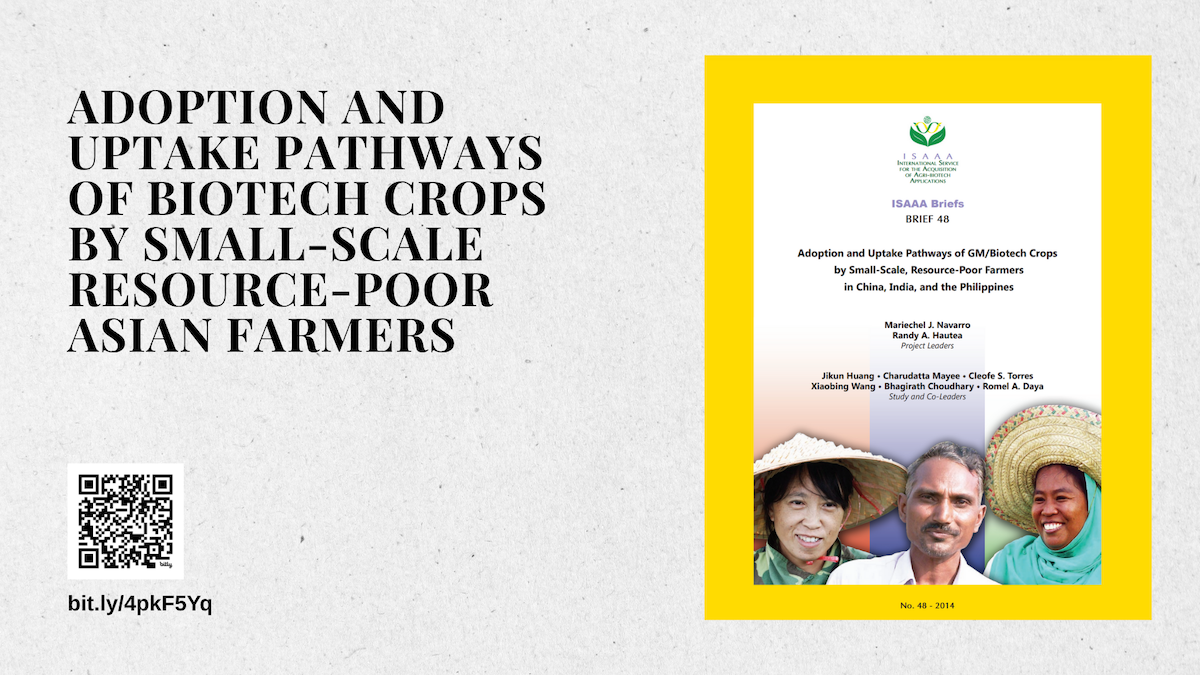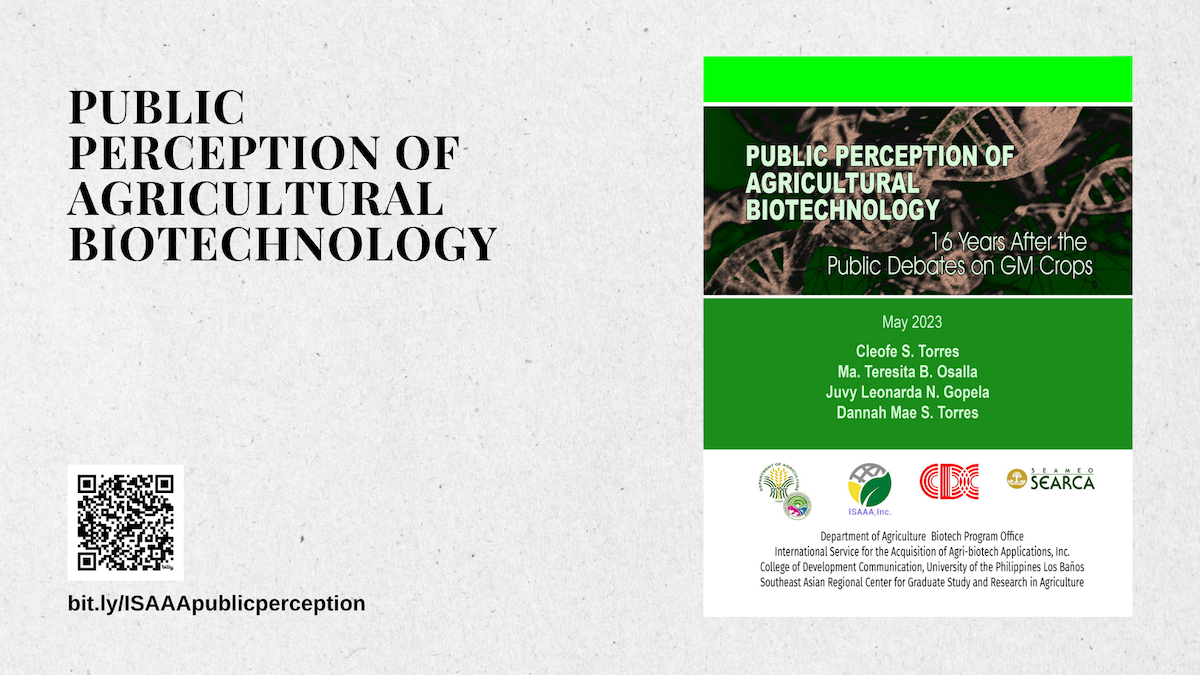Improving the Dialogue: ISAAA's Evidence-based Approach in Biotech Communication
| |
Agricultural biotechnology is a multifaceted science whose rapid evolution and often-contentious nature draw in diverse stakeholders with varying viewpoints. Due to this complexity, ISAAA prioritizes communication research to ensure that reliable data guide its biotech communication initiatives. When such information is not available, ISAAA proactively conducts its own research to establish the required evidence. This article summarizes the communication research initiatives of ISAAA.
Philippine Media Reportage of Biotechnology
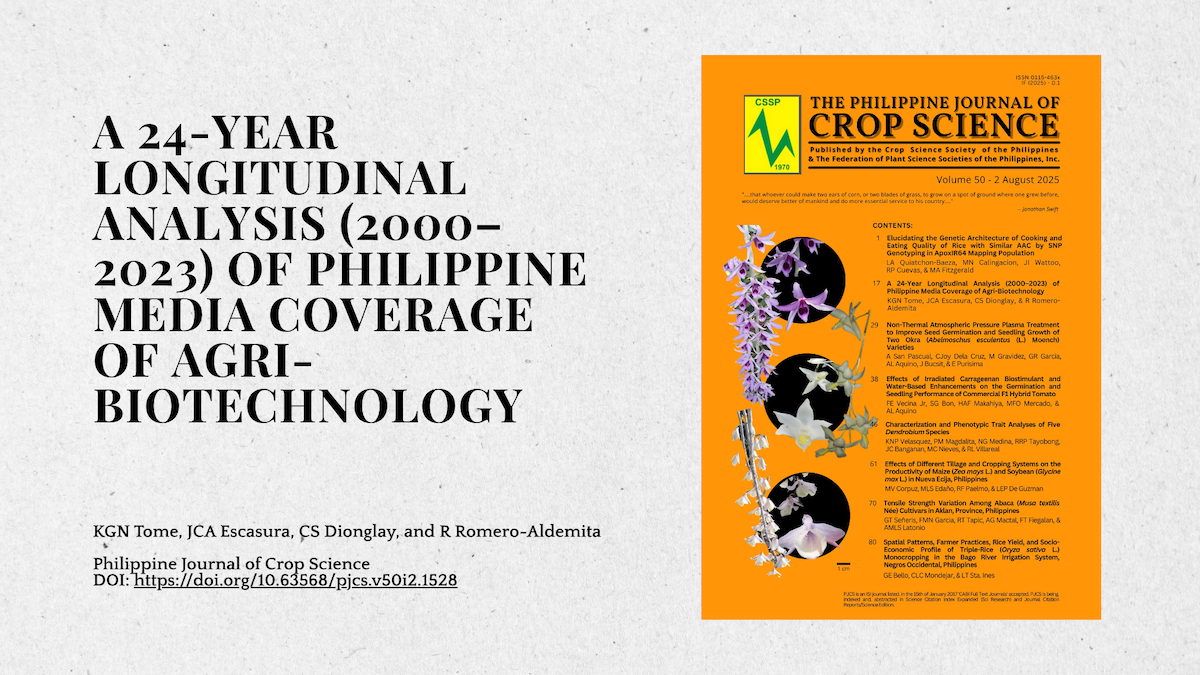
With a paper recently published in the Philippine Journal of Crop Science, ISAAA researchers reported how the Philippine media represent modern biotechnology in the Philippines. A 24-year longitudinal content analysis (2000–2023) of 2,525 articles from four major local newspapers (Philippine Daily Inquirer, Philippine Star, Manila Bulletin, BusinessMirror) showed the key trends in biotech reporting.
Throughout the 24-year period, the government remained the top-cited source. Dominant framing centered on public accountability/governance and social progress/economic development. While genetic modification and biotechnology were core terms, GMO was statistically the most frequent keyword across all tones, often appearing in positive articles. The use of fear-based metaphors has declined over the years. The Philippine Daily Inquirer's tone shifted from negative to neutral, while other papers showed predominantly positive coverage in the latter years. BusinessMirror exhibited the most consistent, evidence-based reporting.
The tone of the article is improving, but challenges remain. Recommendations include implementing continuous quality engagement with media, establishing a fact-checking body to curb misinformation, and expanding future research to include other media platforms for a holistic perspective.
Adoption and Uptake Pathways of Biotech Crops
ISAAA, with funding from the John Templeton Foundation and Southeast Asian Regional Center for Graduate Study and Research in Agriculture (SEARCA), spearheaded a collaborative research project from 2012 to 2014 entitled Adoption and Uptake Pathways of Biotech Crops by Small-Scale Farmers in the Philippines, India, and China. The investigation involved in-country research partners who employed mixed methods, including surveys, focus group discussions, and interviews, to gather comprehensive data. The findings highlighted regional differences in adoption rationales: farmers in the Philippines prioritized the economic benefits of biotech corn, whereas their counterparts in China and India were primarily motivated by the immediate agronomic benefits.
Public Perception of Agricultural Biotechnology
A recent update to the perception study in the Philippines was commissioned by ISAAA to researchers from the University of the Philippines Los Baños (UPLB) and the Polytechnic University of the Philippines (PUP), involving various key stakeholder groups. The study identified Facebook (FB) and YouTube (YT) as the top information sources regarding the technology for these groups. Overall, attitudes toward agricultural biotechnology were found to be favorable, with mean scores ranging from 3.8 to 4.2 out of 5, and the most positive perceptions were recorded among students, farmer leaders, and scientists.
Academics and Scientists as Biotech Communicators
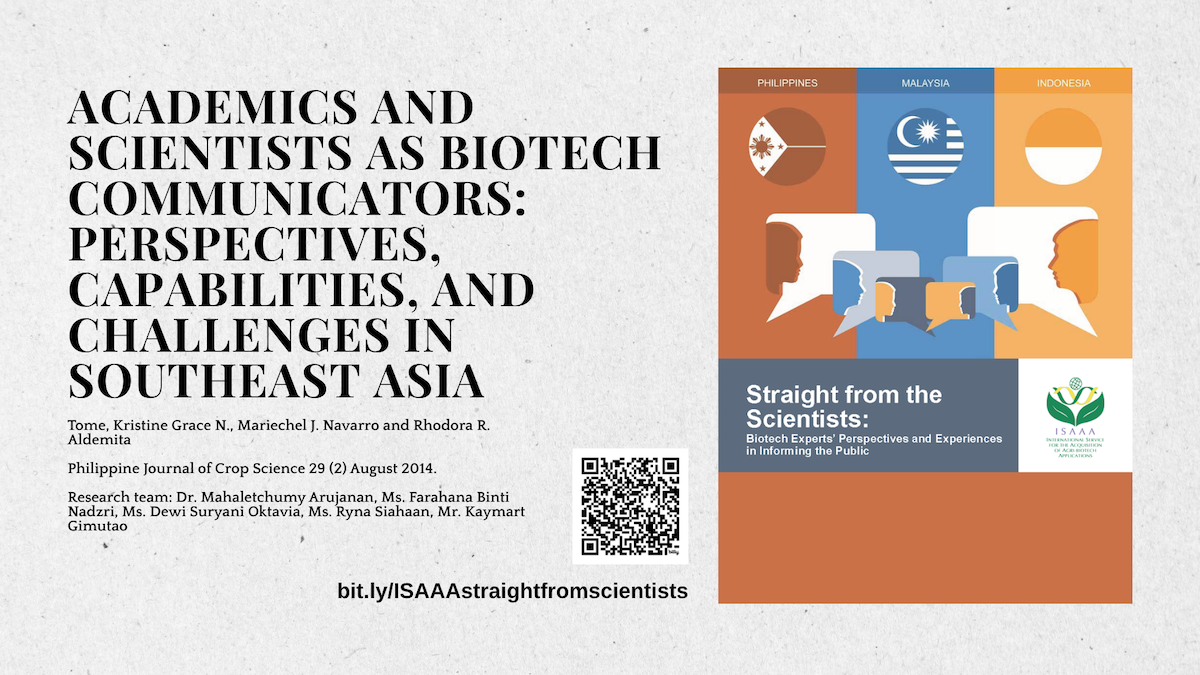
ISAAA surveyed over 200 scientists and academics across 63 academic and research institutions in the Philippines, Malaysia, and Indonesia. The research found that although these experts acknowledged the crucial importance of science communication, they devoted an average of only 11% of their working time to such activities, with the majority of their time reserved for research and instruction. Furthermore, most respondents (40%) reported having a low level of engagement activity, participating in only one to ten science communication activities per year.
Visual Representation of Science
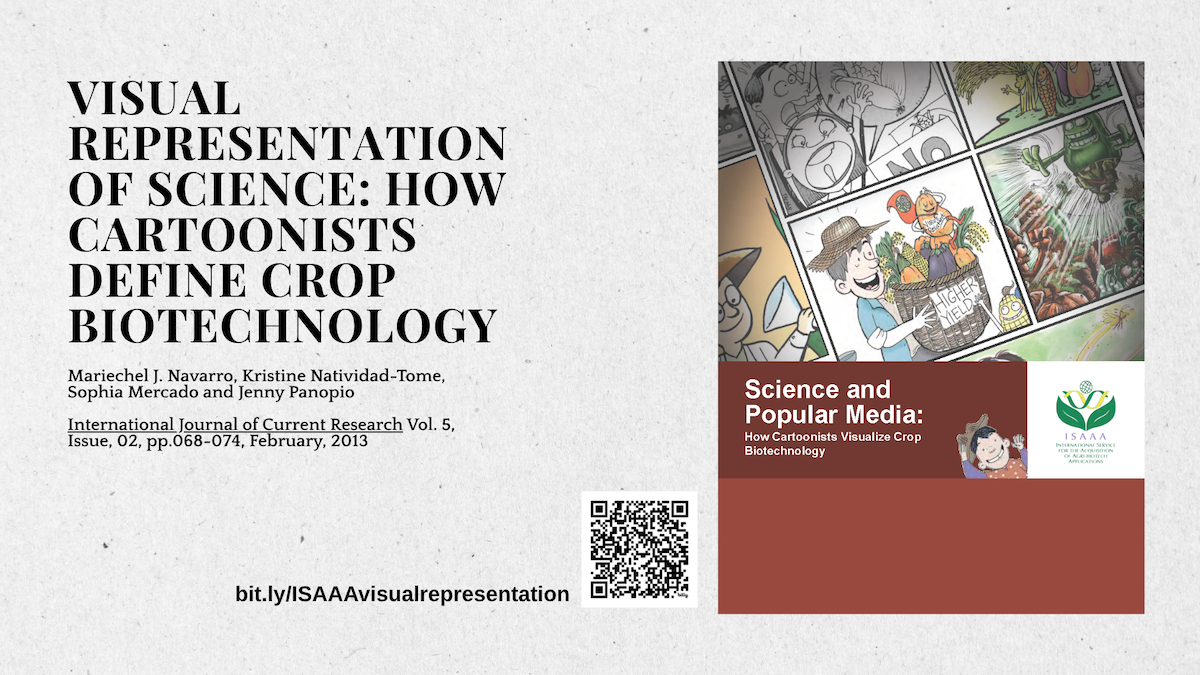
ISAAA also conducted an analysis of cartoons published in newspapers and entries submitted to its BiotechToons contest between 2000 and 2010. The study found that in the initial years of biotechnology reporting, the majority of cartoons exhibited a generally negative tone, frequently employing a fear appeal, using exaggeration due to the absence of concrete products, and highlighting public unfamiliarity with the scientific concept. However, following the commercialization of a biotech crop in the Philippines in 2003, the tone of the cartoons shifted, adopting a more positive perspective.
Visit the ISAAA website for more information.
| Newer Post | Archive | Older Post |
Science Speaks is ISAAA Inc.'s official blog. Weekly blog articles, authored by ISAAA writers, partners, and invited contributors, aim to help share, disseminate, and promote scientific knowledge and its vital role in achieving global agricultural sustainability and development. Your support to Science Speaks will help us achieve this goal. You can help us by donating as little as $10.


